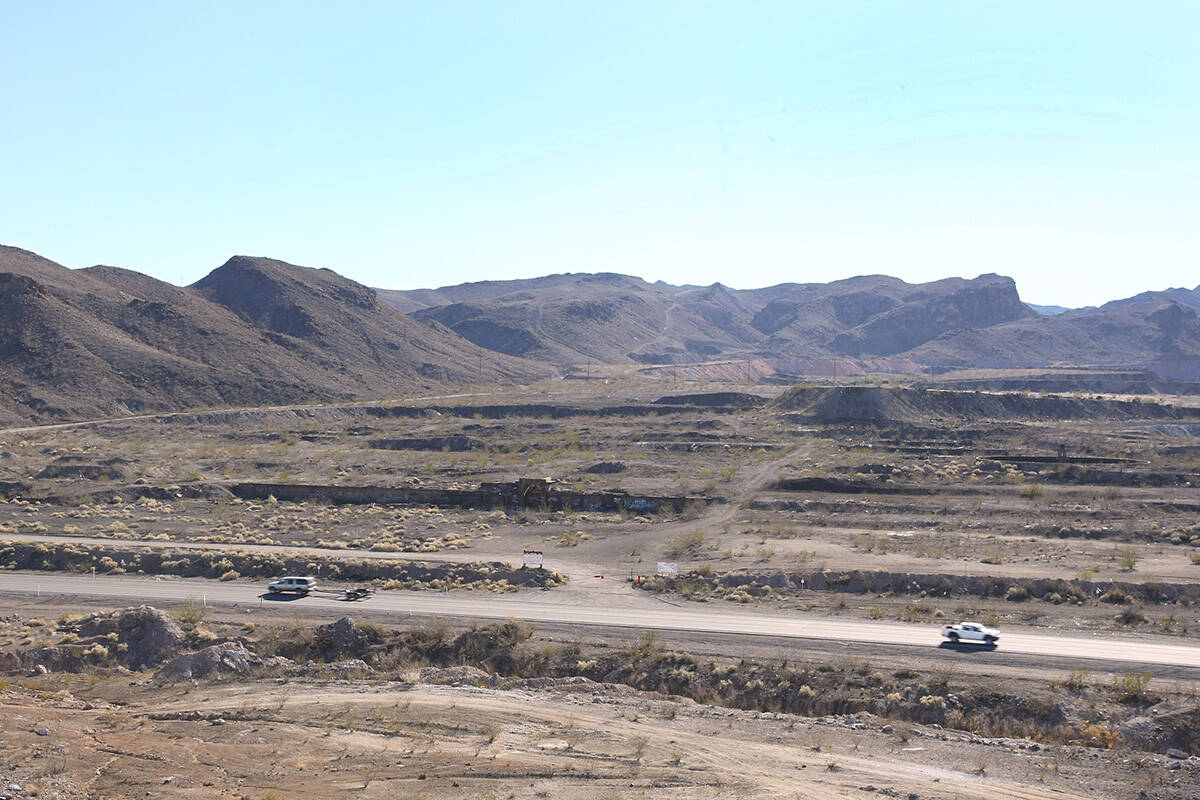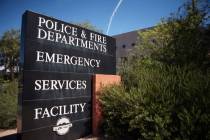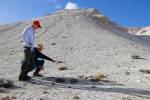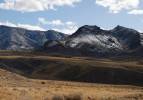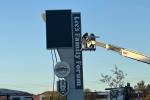Planned housing development on old Henderson mine has experts concerned
Experts who studied an abandoned 100-year-old mine are expressing concerns about a plan to fill in the 1,100-acre site and build a new master-planned community on top of it.
Developer Lakemoor Ventures LLC is applying for a zone change and development agreement for a community of roughly 3,000 homes to be built on top of the site of the Three Kids Mine, near Lake Las Vegas.
Before development, the open-pit mine would be cleaned out and buried before the proposed community would be built. The Henderson City Council will hear the application at a meeting on Tuesday.
Douglas Sims, the dean of the School of Science, Engineering, and Mathematics at the College of Southern Nevada who has researched the movement of arsenic and lead at Three Kids Mine, is concerned about potential long-term risks that may come to future residents if the plan moves forward.
Three Kids Mine was founded to supply manganese for weapons in World War I, and it still holds manganese alongside other metals like arsenic, cadmium, lead and hexavalent chromium, according to the Nevada Department of Environmental Protection. The mine also holds asbestos, among other nonmetal materials.
The plan to clean out the mine starts with moving the asbestos to a landfill, then burying the other materials, like arsenic, lead and manganese, into the mine’s pits, according to the Nevada Department of Environmental Protection and Broadbent and Associates, Inc., the two entities responsible for the site’s testing and cleanup. After the metals are buried, most of the site will be covered with 10 feet of clean soil from surrounding areas.
But Sims said the potential threat lies in what happens to arsenic when it’s in an area without oxygen. Sims said the microbes present in a naturally-occurring anaerobic environment break down arsenic and can produce arsine, or arsenious gas, a process that can be sped up by the presence of water.
“We can’t really predict when, but it won’t take long for that material to start turning its environment from an oxygen-burning to an anaerobic, nonoxygen environment,” Sims said, “which would then attack the arsenic material in the soil, which then could potentially create our arsenious gas, which could float up through the soil column and into those neighborhoods potentially.”
One of the pits will hold the site’s tailings, or the ore waste left over after manganese is mined from it, which contains the highest concentration of harmful metals like arsenic. That pit will be covered with a liner to keep water out, and then a layer of dirt at least 2 feet thick.
Broadbent said the liner is meant to keep water from getting into the pit and seeping into the groundwater, which was already low risk because the water table is several hundred feet below the mine.
But Sims said that while a liner on top of the tailings is better than covering the metals with just soil, it’s not enough to prevent a long-term hazard that could be posed by the metals.
The Centers for Disease Control and Prevention describes arsine as an odorless and flammable gas that is heavier than air and can be harmful to people if inhaled. Breathing in large enough amounts can be lethal, or cause convulsions and paralysis, and smaller amounts of arsine can still cause fatigue, nausea, muscle cramps, headaches and drowsiness, among other symptoms.
Sims and Vernon Hodge, a UNLV professor who worked on multiple studies looking at Three Kids Mine, said another risk is further spreading the metals throughout the surrounding area, reaching as far as Lake Mead, which, research has shown, occurs from water and wind.
Neither Sims nor Hodge said they wanted the city to cancel the project permanently, but they called for more research into the effects of burying the mine before going forward with any development projects on the site.
“We’d like to look generations into the future to protect those people,” Hodge said. “That would require a little more research because this is obviously an area that’s looked at to build houses.”
Contact Mark Credico at mcredico@reviewjournal.com. Follow him on Instagram @writermark2.



